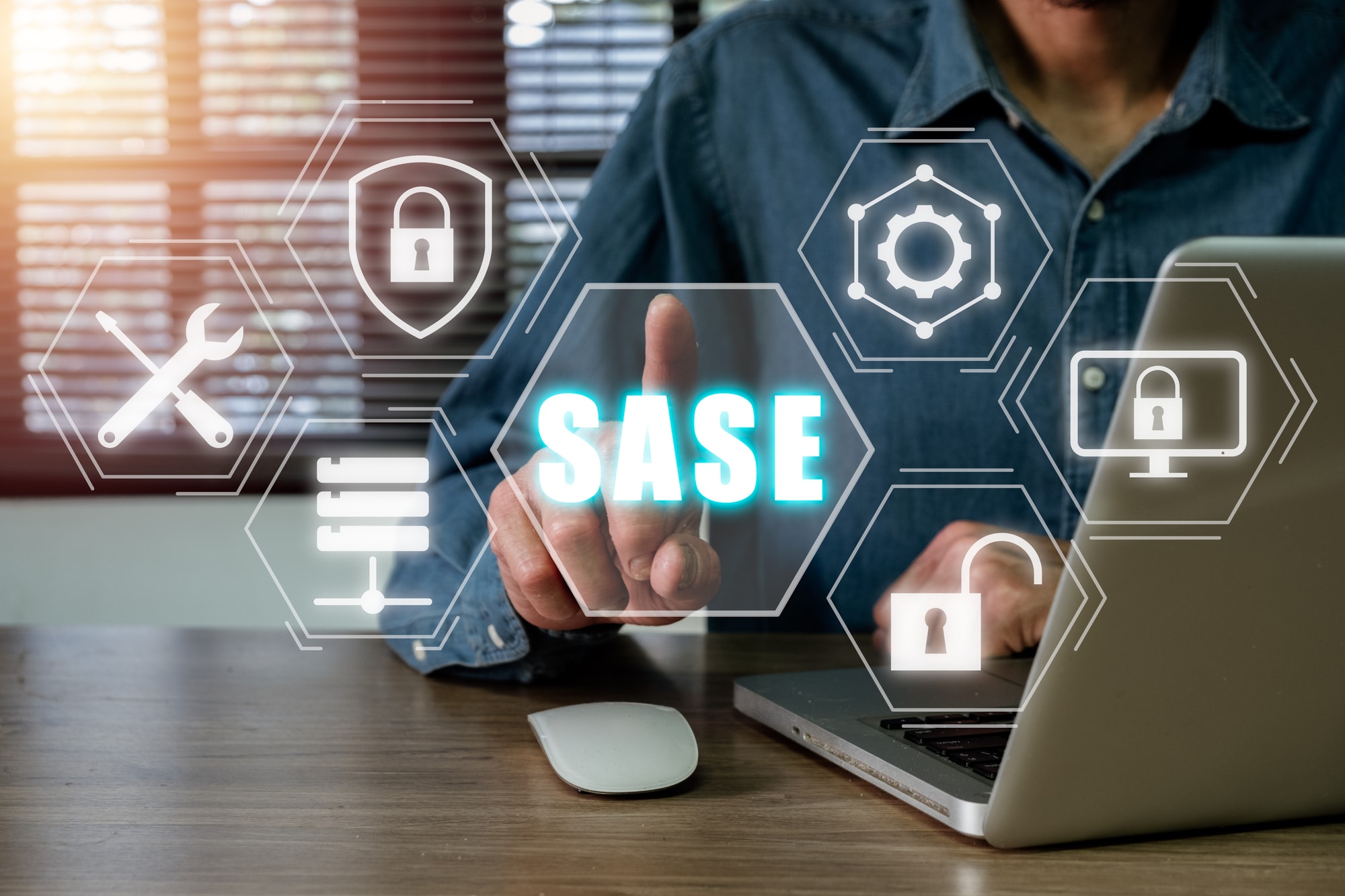
How to block bad actors and become more cyber resilient
As a wise man once said, a failure to plan is a plan to fail. This is especially true in the world of cybersecurity, where it is all but inevitable that an organization will face a security incident.
According to the 2024 Data Protection Trends report from Veeam, ransomware is the leading type of cyber crime, due to its lucrative nature. Cyber criminals have found that stealing, encrypting and selling data back to their victims is highly profitable, which has led to ransomware becoming a billion-dollar industry. Between ransom payments, maintenance, and lost business due to downtime, the average ransomware attack costs a business around £3.5 million.

The double-edged sword of AI in cybersecurity
As artificial intelligence (AI) continues to advance, its impact on cybersecurity grows more significant. AI is an incredibly powerful tool in the hands of both cyber attackers and defenders, playing a pivotal role in the evolving landscape of digital threats and security defense mechanisms. The technology has seen use both by attackers to conduct cyber attacks, and defenders to deter and counter threats.
The incorporation of AI into malicious social engineering campaigns creates a new era where cyber threat actors are more convincingly deceptive. With access to a vast amount of data, cyber threat actors can both increase the success and effectiveness of large-scale phishing campaigns, or use this access to huge amounts of data to spread disinformation online.

GDPR -- easy as ABC with DLP
Regulation, compliance, and security always entwine themselves into modern day discussions around the latest innovations and technological advancements. Most recently, the fanfare around AI has quickly given rise to conversations about how it is impacting companies’ ability to comply with the General Data Protection Regulation (GDPR).
GDPR demands that companies stick within data guardrails, yet 100 percent compliance can often seem like a thin tightrope on which companies must balance. Fortunately, various technologies exist that can help with this, such as Data Loss Prevention (DLP).

Generative AI: Productivity dream or security nightmare?
The field of AI has been around for decades, but its current surge is rewriting the rules at an accelerated rate. Fueled by increased computational power and data availability, this AI boom brings with it opportunities and challenges.
AI tools fuel innovation and growth by enabling businesses to analyze data, improve customer experiences, automate processes, and innovate products -- at speed. Yet, as AI becomes more commonplace, concerns about misinformation and misuse arise. With businesses relying more on AI, the risk of unintentional data leaks by employees also goes up. For many though, the benefits outweigh any risks. So, how can companies empower employees to harness the power of AI without risking data security?

Biometrics explained: Breaking down the technology's controversy and contributions to security
Advancements in technology within the last decade have sparked the increased use of digital biometric verification. The technology’s modern verification capabilities have outpaced traditional cybersecurity attack methods geared toward credentials theft -- making the technology an attractive enhancement for corporations seeking to provide a more secure, seamless experience for users to verify their identities. Now, users can leverage biometric technology for secure access to critical information, such as applications in financial and healthcare sectors.
However, recent pushback from the Federal Trade Commission (FTC) on the use of biometrics for identity verification, particularly age verification, highlights compliance concerns surrounding enterprises’ data collection and storage practices -- especially the collection of minors’ biometric information.

Measuring AI effectiveness beyond productivity metrics
Last year was an AI milestone marked by enthusiasm, optimism, and caution. AI-powered productivity tools promise to boost productivity by automating repetitive coding and tedious tasks and generating code. A year later, organizations are struggling to quantify the impact of their AI initiatives and are reevaluating metrics to ensure they reflect the desired business outcomes.
Measuring developer productivity has historically been a challenge, with or without the introduction of AI-powered developer tools. Last year, McKinsey & Company described developer productivity measurement as a “black box,” noting that in software development, “the link between inputs and outputs is considerably less clear” than other functions.

Why the CHIPs act is the lifeline US tech desperately needs
In the next five to ten years, the United States faces a critical juncture in its technological trajectory, heavily influenced by the implications of the CHIPs Act. As a seasoned venture capitalist and Managing Director of Venture Labs, I have closely monitored the evolution of technology and innovation ecosystems. The CHIPs Act represents more than just a policy shift; it is a strategic maneuver poised to revolutionize the hardware industry, foster innovation, and bolster national security.
Historically, hardware production has been dominated by a few key players, leading to centralized control that stifles competition and innovation. The CHIPs Act aims to dismantle this concentration, decentralizing hardware production and empowering a diverse array of developers. This shift is crucial not only for fostering competition but also for driving technological advancements. By creating an environment where smaller companies can thrive, we can expect a surge in innovative solutions that address emerging challenges across various industries.

How shifting information left can empower developers and accelerate innovation
Development teams are increasingly seen as the engine room of the modern digital enterprise, tasked with building the new services and capabilities that the business needs to thrive. However, with resources stretched to their limit, organizations must find a way to empower their developers to work more productively, so they can deliver newer, better digital capabilities faster and more reliably. If they fail to do so, it will be more difficult to keep pace with market demands, and many will see their competitors gain the advantage.
In response, organizations are increasingly adopting a shift left approach, to ensure that new code is tested earlier in the software development lifecycle (SDLC). This reduces the risk that code could contain errors or vulnerabilities that lead to delayed innovation, as applications or features are rolled back to be reworked by developers. But shift left should not be about moving extra work “left” in the SDLC, or demanding developers assume extra responsibilities. It should be about empowering developers to work smarter, by shifting all relevant information left. Developers should have all the insight they need, when they require it, to make better decisions.

Redefining security in mobile networks with clientless SASE
As organizations adapt their IT ecosystems to incorporate IoT devices and expand remote working opportunities allowing employees to use personal mobile devices, enterprise mobility has become indispensable in modern business operations. Nonetheless, this shift presents numerous security challenges and lifecycle management considerations, especially given that mobile devices connecting to networks frequently lack compatibility with traditional security solutions such as Virtual Private Networks (VPNs) or endpoint tools.
Mobile Network Operators (MNOs) and Mobile Virtual Network Operators (MVNOs) are at the forefront of this challenge. These service providers are tasked with the dual responsibility of ensuring optimal connectivity while safeguarding data privacy and user experience. As the market for basic connectivity services becomes increasingly commoditized, these operators are compelled to explore new avenues for revenue through value-added services. Among these, security services stand out as a promising opportunity.

It's not all artificial: The 4 types of intelligence CTOs need to get the most out of AI
Enterprises plan to spend roughly $35.5 million on IT modernization in 2024, with over a third going to AI to boost productivity. But it’s not all sunshine and rainbows. At the same time, 64 percent of IT leaders worry about rushing to adopt generative AI without understanding what's needed to use it effectively and safely. And while 75 percent of organizations have experimented with generative AI, only 9 percent have adopted the technology widely. There’s so much more potential to tap into.
To get the best out of AI to supercharge operations it all comes down to intelligence. Afterall, AI is only as intelligent as those using it. There are the four types of intelligence that CTOs need to build, and it’s nothing to do with coding or super complicated technology. It’s about cultivating soft skills and human talent to control AI in a responsible way.

Unlocking cybersecurity success: The need for board and CISO alignment
The C-Suite’s perception of cybersecurity has evolved dramatically over the past decade. It’s gone from being an afterthought for technology departments to worry about, to a cornerstone for business survival and operational strategy. The heightened awareness of cybersecurity stems from a deeper grasp of the legal, reputational and financial implications of data breaches. This, combined with regulatory pressures such as the original NIS directive, has forced leaders to enhance their organizations’ cybersecurity measures.
The result is that 75 percent of organizations now report that cybersecurity is a high priority for their senior management team. While on the surface this should be celebrated, when digging deeper, conversations between CISOs and the wider C-Suite often just revolve around high-profile or user-centric security risks. More technical and advanced threats such as those related to application security are overlooked. The race to embrace AI and increasingly complicated cloud infrastructures have also made communicating cybersecurity priorities even more difficult for CISOs.

Out of the shadows and into the light: Embracing responsible AI practices amid bias and hallucinations
The path to widespread AI is a bumpy one. While its potential to enhance consumer experiences and streamline business operations through personalization, autonomy, and decentralized reasoning is evident, the technology comes with inherent risks.
AI can produce conclusions that aren’t true, spread misinformation and in some cases, perpetuate existing biases. This -- the darker side of AI’s impact -- can leave business leaders facing financial, legal, and reputational damage.

Balancing security and autonomy: Strategies for CISOs in the cloud era
Maintaining a secure cloud environment is one of the most important responsibilities of any CISO today, given that over 50 percent of all cyberattacks now originate in the cloud. However, this is a daunting task, as security must now be balanced against other priorities such as maintaining agile operations and the need to innovate.
Organizations today are racing to accelerate their cloud adoption due to the need for greater scalability and cost-efficiency. It has, therefore, become a critical business strategy to ensure efficiency, accessibility, and sustainability in operations. As a result, cloud investments are soaring across the board. Gartner predicts that end-user spending on public cloud services will reach $679 billion by the end of this year and exceed $1 trillion by 2027.

Six steps to safeguarding your digital identity
We lose a bit of our digital privacy with every data breach that occurs. A breach like the one at AT&T -- which exposed Social Security numbers and other personal information needed for identity theft -- is particularly serious in the landscape of data breaches. The percentage of users with Social Security numbers exposed in our data bases following the AT&T breach increased from less than 1 percent to almost 15 percent. Sensitive personal information getting out -- especially when it's easily accessible on the public internet, not just the dark web, which requires special software to be accessed -- opens you up to a huge risk of abuse.
The most notable threat users face is the potential for identity theft, where malicious actors access email, bank, and credit card accounts to impersonate victims. This can also include gaining unauthorized access to accounts by resetting passwords and even taking control of your phone number to bypass text message confirmations. What’s more, if a thief has access to your personal details, they might go as far as taking out loans or credit cards in your name -- a tactic that remains one of the most common types of identity theft.

Why a zero trust approach is essential to mitigate the threat of unsecured APIs
With the move to hybrid working, the rapid adoption of cloud, increased use of mobile and IoT devices, combined with the ongoing drive to modernize and transform IT operations, the attack surface of every organization has -- and continues to -- expand.
Traditional boundaries have been blurred between businesses, suppliers, partners, customers, workers, and even home-life, with this ecosystem continuing to grow. Here, APIs are providing the connective tissue for modern applications and legacy infrastructure to co-exist.

